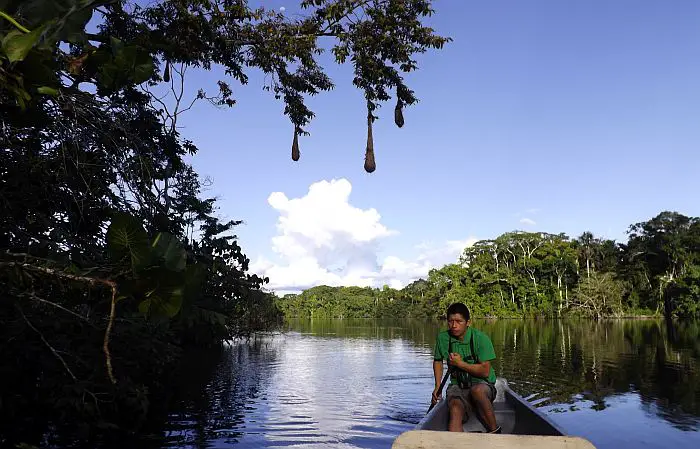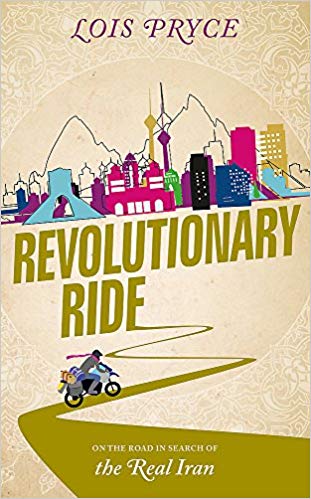Perceptive Travel Book Reviews February 2019
by Susan Griffith
In this issue: A woman motorbikes solo around Iran, a British comedian explores remote South Asia with a documentary crew, plus a Lonely Planet compendium presents the best ever travel high points of a hundred writers.
Revolutionary Ride: On the Road in Search of the Real Iran
By Lois Pryce
In 2011, Lois Pryce found an anonymous note stuck to her battle-scarred motorbike parked in central London, urging her to visit Shiraz; "the friendliest city in Iran... city of poetry and gardens and wine." What an irresistible invitation for an adventure travel writer and, two years later, she loaded her bike onto the weekly Trans-Asia Express train service linking Ankara and Tehran, clutching a visa for Iran that didn't cover her preferred mode of transport. Travel books about Iran have been reviewed in these pages before (see Couchsurfing in Iran) and the same theme emerges, that grassroots Iranians are heartwarmingly hospitable. Parts of her 3000-mile journey read almost like a feel-good book. But behind the Persian warmth, courtesy, and humor, the pain and despair of a muzzled and oppressed people are sometimes revealed, as when a shipping agent in Isfahan states a simple wish: "I would like to go to the cinema or a park, without fear, like you can."
The complete lack of any signage in English and general absence of infrastructure for foreign tourists means that she has to get over her mild panic whenever she finds herself unable to locate herself or her destination on any map (she has no GPS). She is often culturally adrift too. Almost the first thing that visitors to Iran must learn about is Ta'arof, the elaborate Persian etiquette dictating that offers of food, money, assistance must be ritually declined three times before gracious acceptance is permitted.
Saying no when you mean yes is just one of the many hard-to-fathom contradictions she finds on her travels. She is flummoxed by the sight of chador-encased women shoppers buying racy lacy underwear from male bazaar stallholders with no hint of embarrassment. She is taken aback by the attitude to heroin addiction when someone she meets treats it like any chronic illness. A taxi driver in the city of Yadz who insists on taking her home to meet his wife seems to be conservative and teetotal yet champions women's rights.
It seems that it is impossible to pigeonhole anybody. "The fabled mind-broadening power of travel is usually a gradual affair... but in Iran it was a sledgehammer effect. I found myself rethinking, recalibrating just about everything every minute of the day. It was like being whacked in the face with my own prejudices and misconceptions at every turn; but it wasn't an unpleasant experience, it was thrilling."
She gets the wrong end of the stick when she is followed by a vehicle full of men. Only after she is outrun and in her terror starts to hurl abuse does she realize they simply want to give her some fruit and take her photo. Years of adventurous travel have taught her to hone her instincts when deciding whether to trust strangers, but Iran seldom conforms to expectations.
If the venerable Dervla Murphy is happy to endorse this travel writer as a "kindred spirit" on the cover, and if the story manages to make some readers long to experience the open-hearted hospitality of a country so reviled, this must be a book worth reading.
East of Croydon: Blunderings through India and South East Asia
By Sue Perkins
The nondescript town south of London called Croydon will mean nothing to readers outside the UK. It is the home town of Sue Perkins, a well-known British media personality, comedian, and documentary maker. Her comic persona is as someone who has seldom traveled outside her dull commuter town and certainly not to the remote sources of two of the great rivers of Asia, the Ganges and the Mekong.
Sue Perkins likes playing the part of the innocuous buffoon, often displaying grotesque ineptitude, exaggerated for humorous effect, especially when joining in with the locals in, for example, a dragon boat race or helping village women bat fish out of nets. She does everything in a ham-fisted fashion (see the gerund of the title) but is invariably a jolly good sport.
But she is not just a clown. She admits early on to having to combat an inner voice that drives her to darkness. "To travel is to quieten that voice, to know that it cannot and will not control me." She is a thoughtful traveler but even more an emotional one who feels for the marginalized people she meets and their environmental degradation. "How pretty poverty looks when you don't have to live it". When she and the crew visit the stilt village of Tonle Sap in Cambodia, she is aware that they are "another boatload of tourists on a float-by gawp, come to take pictures of subsistence living with our expensive cameras".
She retains her wonderment at the generosity of the have-nots, and has a gift for connecting with people, often through playing with their children, an activity she does not have to feign enjoying. She brings her interviewees to life, whether Mr. Bounsom, the entrepreneurial fisherman, who (like her) is "all zest and no skills" or the wizened herbalist Dr. Ho who (hilariously) preens to the camera, since it turns out he has featured in previous documentaries.
In the holy city of Varanasi, we are not allowed to forget that the Ganges is full of "mud and shit and plastic bags". Similarly, the Mekong is "filthy and clogged in Ho Chi Minh City, raging in Laos, dammed in China" and becomes pure only near its source. Her language is nothing if not earthy: the Irrawaddy dolphin of Myanmar looks a bit "penisy" and, while visiting a hill tribe in northeast Cambodia, she manages to render the locals helpless with laughter by sitting on a "fat pig-pat, sunbaked on the outside, but still deeply gooey within; texturally, think dung fondant".
Unlike many comedians, she does not eclipse all the pain with humor. She does not disguise her outrage at the obscene contrast of stretch limos gliding past tarpaulin shanties in the Golden Triangle. An extended and moving account of her father's death is pegged to the appearance of a blackbird at the source of the Ganges in the Himalayas, proving that this book works in multiple registers.

The Best Moment of Your Life: 100 Life-Changing Travel Experiences
By Lonely Planet
After these two nuanced travel narratives, we come to something less weighty but beautifully illustrated. One hundred travel writers, many of them guidebook writers from the Lonely Planet stable, were invited to describe their most transformational travel moment in a mere 250 words. I am sure this was an enjoyable exercise, as it would be for any of us, but it does not always make for a gripping read. One person's apocalyptic experience when seeing the Northern Lights, meeting a gorilla, or having a barbecue with a gaucho can occasionally be another person's excuse for a snooze.
Many contributions are by adventure travelers describing their triumphant achievement in crossing a desert, summiting a mountain or encountering a remote tribe. The premise of the book mainly precludes humor. The editor, Matt Phillips, contributes a piece on Varanasi on the Ganges which seems air-brushed and clichéd compared to Sue Perkins's more authentic encounter with the muck and mud. Unfortunately hints of promotional language creep in: we have "lands of legend" (Monument Valley), the "immensity of nature's playground" (Sweden) and "rewards you never dreamed possible" (Foreword). Of course the quality of the writing is variable. I liked William Grey on Queensland's Heron Island delighting in a mass gathering of wedge-tailed shearwaters, and also John Gimlette upriver deep in Guyana, exhilarated by discovering evidence of the slave uprising of 1763 which he had been researching in London libraries.
True to the guidebook publisher's remit, practical travel information accompanies these moments of exhilaration, revelation, and enchantment. The reader is jolted from the sublime to the mundane in each double page spread, from an "intoxicating mix of emotions, spliced with glorious sights and sounds" to the cost of the bus from a neighboring town or the companies that offer guided tours.
The book is stuffed full of sumptuous photos of sunsets, mountain ranges, and exotic animals, most of them Shutterstock and Getty Images rather than photos taken by the authors. For a book with such high production values, there is too much careless editing (a Scandi-file rather than a Scandi-phile, unchartered for uncharted...). And the cover is underwhelming. However, it is always a pleasure to browse in these glossy LP anthologies and to dream of places around the globe where road-to-Damascus travel moments might take place.
Susan Griffith is a Canadian travel writer and editor based in Cambridge England, who writes books and articles for adventurous working travelers. Starting with the classic Work Your Way Around the World and Teaching English Abroad, she has also turned her attention to gap years and has written definitive guides for the young and the not-so-young: Your Gap Year and Gap Years for Grown-ups. She also contributes hotel reviews to the Daily Telegraph, a British daily newspaper.
See the last round of book reviews from Susan Griffith
- Finding Gandhi by Kelsey Timmerman
- Barbershop Postcards—a True Cultural Travel Selfie by Bruce Northam
- Finding the Secret Beaches of Panama and Costa Rica by Tim Leffel
- Once in a Lifetime: Visiting Bruegel in Vienna by Michael Shapiro

Buy Revolutionary Ride: On the Road in Search of the Real Iran at your local bookstore, or get it online here:
Amazon
Amazon UK
Kobo

Buy East of Croydon: Blunderings through India and South East Asia at your local bookstore, or get it online here:
Amazon
Amazon UK
Kobo


